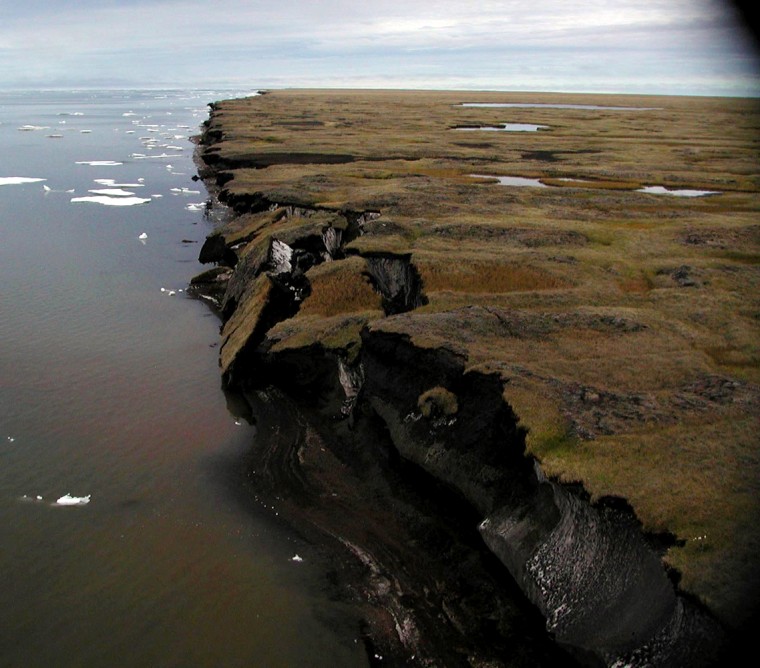Old Alaskan oil wells could be swallowed by the ocean as rising temperatures speed up erosion of the state's Arctic coastline.
The disappearance of sea ice that shields against storm waves, and of permafrost that holds shorelines together, is eating away at the coast of the National Petroleum Reserve-Alaska, according to a new U.S. Geological Survey study.
Erosion rates have risen steeply along the coastline of the reserve — where the Bush administration wants to increase oil drilling — possibly due to warmer weather, the study showed.
"Coastal erosion has more than doubled along a segment of the Arctic Alaska coast during the past half century," it said, adding the land loss was being magnified by the conversion of freshwater "thermokarst" lakes into saltwater bays as they become inundated with waters from the Arctic Ocean.
"There's a warming trend in Alaska, and that's documented," said John Mars, primary author of the study. "We think that that is related to what we're seeing."
30 old exploration wells
The U.S. Bureau of Land Management, which oversees the reserve, has identified about 30 old oil exploration wells that need to be cleaned and plugged before the sea claims them.
"Hopefully we'll get all of these wells before anything happens," said Sharon Wilson, spokeswoman for the BLM's Alaska regional office.
The BLM has already cleaned and plugged the J.W. Dalton well in 2005 after more than 300 feet of shoreline was eaten away in a single summer. That well, drilled in 1979, is now underwater.
"There was sort of a mass failure in terms of the land that just melted away," said Wayne Svejnoha, a BLM scientist, adding the cleanup is expected to cost around $20 million per well.
Cleanup is planned next year for a 1976 well on the east side of Teshekpuk Lake, Svejnoha said, although a waste pit has been breached and may be leaking pollutants into the lake.
Environmentalists find it ironic that BLM is on the verge of authorizing new oil developments in the Teshekpuk wetlands.
"On the one hand, they're having to scramble and clean up old wells that may soon be covered by water. And on the other hand, they may be proposing to expand that oil-field infrastructure in the same area," said Stan Senner, executive director of Audubon Alaska.
He and others oppose BLM plans for new exploration along Teshekpuk Lake, a potentially oil-rich area but also critical to migrating geese, caribou and other Arctic wildlife.
Pits no longer used
But Svejnoha said new oil drilling would lack some erosion-related environmental risks. Operators no longer store drilling waste in pits next to wells, eliminating the specter of such pits unleashing their contents into the sea, he said.
Coastal erosion is among the climate impacts — such as reduced periods for hard-frozen tundra and solid sea-ice cover — that environmentalists say makes North Slope oil operations riskier than before.
More than oil sites are affected by erosion, with sections of the North Slope's sole highway at risk, as well as abandoned defense communications structures built early in the Cold War — many of which have associated hazardous-waste stockpiles.
